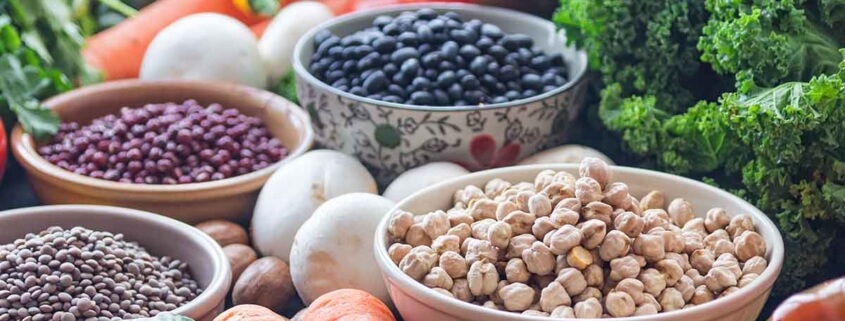Food Sources of Magnesium for More Energy and Better Health
Magnesium is an important mineral found in many whole foods and essential to most of your basic biological functions. It contributes to energy production; protein synthesis; nerve and muscle function; regulation of heart rate, blood sugar levels, and blood pressure; bone maintenance; effective absorption and use of other nutrients; and more. Every organ in your body needs magnesium to work.
The University of Maryland Medical Center points out that most Americans don’t get enough magnesium in their diet, though true deficiencies are rare. Still, obtaining more magnesium from healthy food sources is one way to promote better health and higher energy levels.
Generally healthy adult males should get around 420 mg of magnesium per day, and generally healthy adult females should get around 320 mg per day. Below are some healthy whole foods that are rich in magnesium. For optimal energy and health, incorporate a variety of them into your diet every day.
Nuts and Seeds
Many nuts and seeds are high in magnesium, in addition to healthy fats, protein, and a variety of vitamins and minerals. Almonds, cashews, walnuts, pecans, Brazil nuts, hazelnuts, pistachios, pine nuts, pumpkin seeds, squash seeds, sesame seeds, sunflower seeds, flax seeds, and others make for great snacks, salad ingredients, or toppings.
Legumes
The legume family is another good place to turn for magnesium, as well as plant-based protein, healthy fats, and plenty of other vitamins and minerals. This food group includes peanuts, peas, and all the many types of beans, including soybeans (edamame, tofu, tempeh, etc.). These are versatile foods that can be used as supporting ingredients, sides, and entrees in so many ways.
Leafy Green Vegetables
Leafy green vegetables—particularly the dark-colored ones—are nutrient powerhouses, and they supply a good deal of magnesium per serving. Use kale, spinach, Swiss chard, bok choy, collard greens, turnip greens, mustard greens, beet greens, cabbage, and others in your salads, as side dishes, and as beds under your entree’s protein every chance you get.
Fruit and Other Vegetables
Fruit and vegetables are well known for being rich in vitamins, minerals, antioxidants, and other phytonutrients, and a number are noted for their high magnesium content. Some of these include banana, avocado, papaya, berries, melons, prune, tomato, broccoli, Brussels sprouts, squash, bell pepper, and okra. Eat multiple organic fruit and veggie snacks and sides every day!
Whole Grains
Whole grains are excellent food sources of magnesium. Always choose them over refined grains, which are stripped of most of their nutrient value and cause unhealthy, de-energizing spikes and crashes in blood glucose levels. Whole wheat, bran, oats, brown rice, barley, bulgur, buckwheat, quinoa, and millet are all examples of whole grains.
Seafood
Various types of seafood are high in magnesium, along with protein, healthy fats, and other important nutrients. Shellfish like lobster, oysters, scallops, clams, and shrimp, as well as fish such a mackerel, pollock, turbot, tuna, salmon, and halibut, are smart protein choices that deliver plenty of magnesium.
Other Foods
In addition to the above, there are a number of other good food sources of magnesium. Potatoes, dark chocolate, blackstrap molasses, agar seaweed, milk, and yogurt are a some. Many herbs and spices are also good for getting more magnesium. Some options include parsley, cumin, clove, fennel, coriander, dill, celery seed, basil, tarragon, and cumin.



